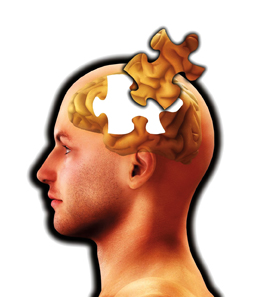Quick Reads
Posted on December 1, 2013 by bob in April 2010
“Depressed and anxious people are more likely to have heart attacks and to die from them than those whose dispositions are sunnier.”
People with cheerful temperaments are significantly less likely to suffer a coronary event such as a heart attack or sudden cardiac death, new Johns Hopkins research published in the American Journal of Cardiology suggests.
Previous research has shown that depressed and anxious people are more likely to have heart attacks and to die from them than those whose dispositions are sunnier. But the Johns Hopkins study shows that a general sense of well-being – feeling cheerful, relaxed, energetic and satisfied with life – actually reduces the chances of a heart attack.
While some have suggested it’s possible that people lucky enough to have such a trait are more likely to take better care of themselves and have more energy to do so, the research shows that people with higher levels of well-being still had many risk factors for coronary disease but had fewer serious heart events.
The researchers found that participants’ positive well-being was associated with a one-third reduction in coronary events; among those deemed at the highest risk for a coronary event, there was nearly a 50% reduction. The findings took into account other heart disease risk factors such as age, smoking, diabetes, high cholesterol levels and high blood pressure.
 Anemia Linked to Increased Risk of Dementia
Anemia Linked to Increased Risk of Dementia
Anemia, or low levels of red blood cells, may increase the risk of dementia, according to a study performed by University of California – San Francisco researchers and published in the online issue of Neurology®. For the study, 2,552 older adults between the ages of 70-79 were tested for anemia and also underwent memory and thinking tests over 11 years.
The research found that people who had anemia at the start of the study had a nearly 41% higher risk of developing dementia than those who were not anemic.
The link remained after considering other factors, such as age, race, sex and education.
There are several explanations for why anemia may be linked to dementia. For example, anemia may be a marker for poor health in general, or low oxygen levels resulting from anemia may play a role in the connection. Reductions in oxygen to the brain have been shown to reduce memory and thinking abilities and may contribute to damage to neurons.
 Routine Tasks Pose Problems for Older Individuals with Vitamin D Deficiency
Routine Tasks Pose Problems for Older Individuals with Vitamin D Deficiency
Vitamin D-deficient older individuals are more likely to struggle with everyday tasks such as dressing or climbing stairs, according to a study in The Endocrine Society’s Journal of Clinical Endocrinology & Metabolism. Scientists estimate as many as 90% of older individuals are vitamin D deficient.
The vitamin – typically absorbed from sunlight or on a supplementary basis through diet – plays a key role in bone and muscle health.
Researchers examined two groups – 762 people between the ages of 65 and 88, and 597 people between the ages of 55 and 65 – over the course of six years. Using blood test results, the subjects were split into groups with the highest, moderate and lowest vitamin D levels.
Among the older group of participants, people with the lowest vitamin D levels were 1.7 times more likely to have at least one functional limitation compared to those with the highest vitamin D levels.
In the younger cohort, individuals with low vitamin D levels were twice as likely to have at least one physical limitation. While the majority of the people in the older cohort’s top two vitamin D groups did not report any physical limitations, 70% of the people with the lowest vitamin D levels had at least one limitation. In addition, the study found vitamin D-deficient individuals were more likely to develop additional limitations over time.
 New Study Says Exercise Can Reduce Stroke Risk
New Study Says Exercise Can Reduce Stroke Risk
A new study from researchers at the University of Alabama at Birmingham (UAB) and published in the American Heart Association journal Stroke is one of the first to study the relationship between exercise and stroke in a large biracial cohort of men and women in the United States.
Using 27,000 stroke-free blacks and whites ages 45 and older, researchers examined the association of self-reported physical activity with incident of stroke. Participants were followed for an average of 5.7 years.
The results showed that physical inactivity was reported by 33% of participants and was associated with a 20% increased risk of stroke. Those who reported they exercised at least four times a week were less likely to experience a stroke or mini-stroke.










